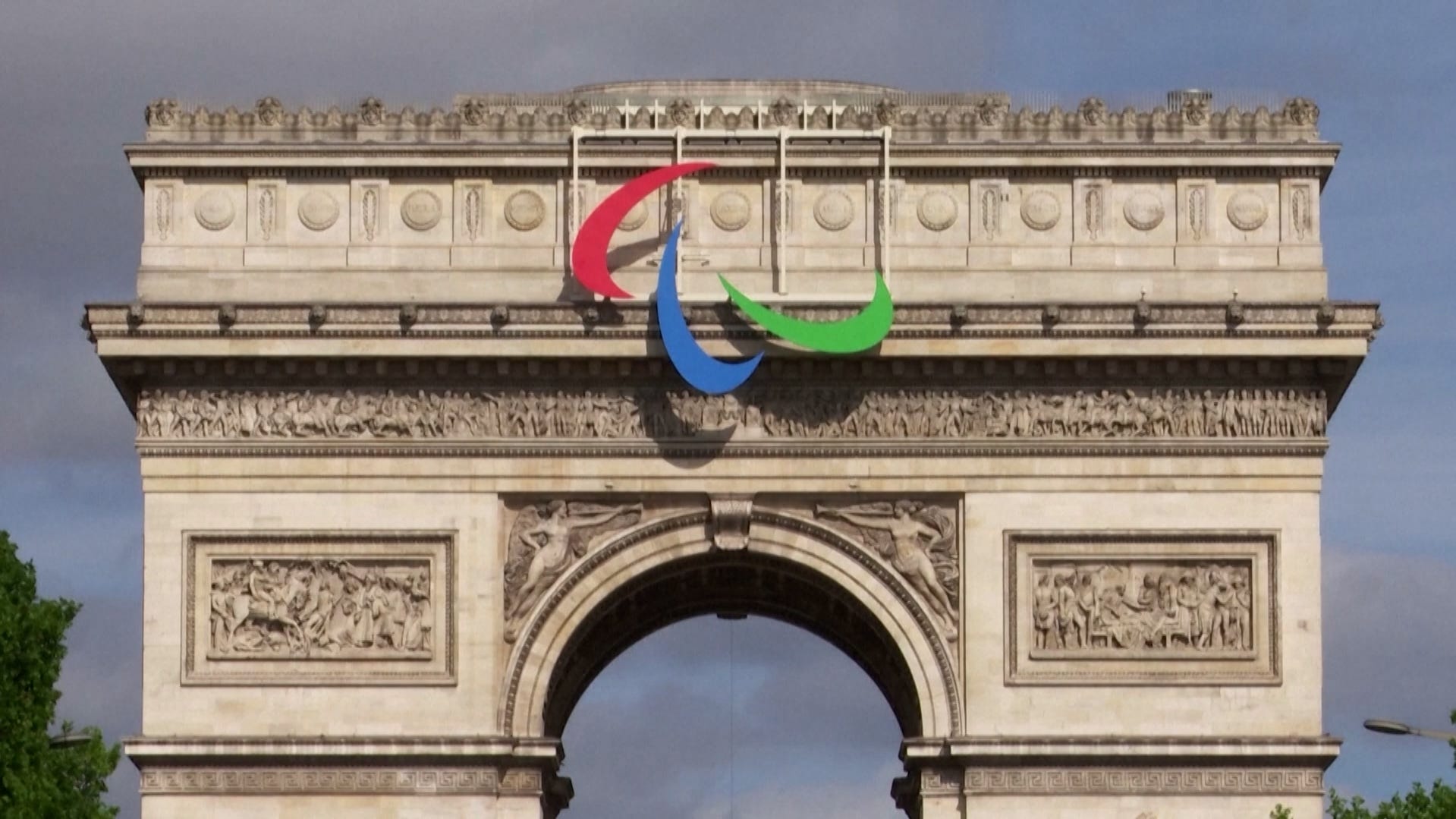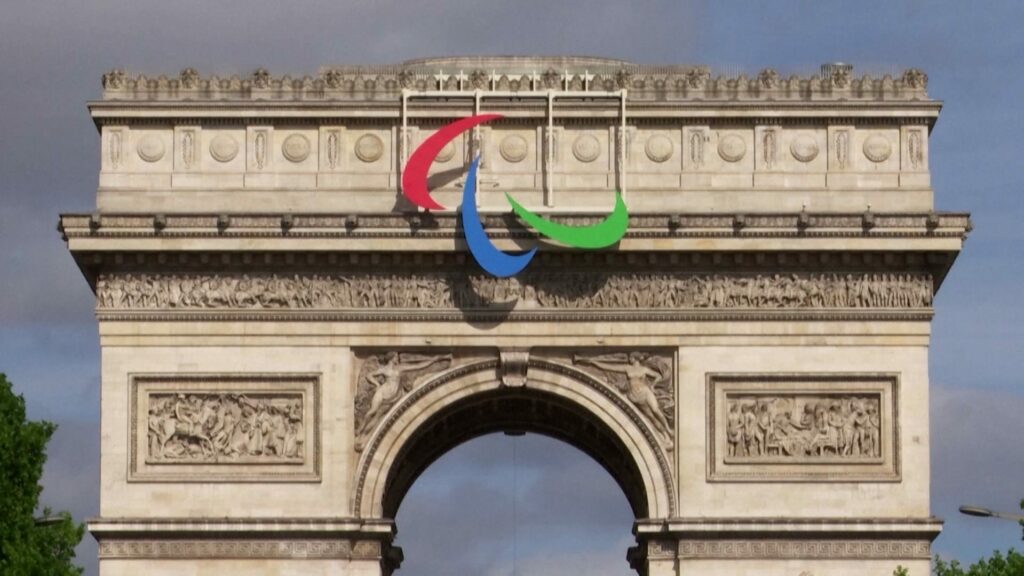
What are the Paralympics? We break down the Games.
The Paralympics are beginning in Paris and are using several of the venues that were used for the Olympic Games.
Griffin Hadley
Stressful and terrifying.
That’s how discus thrower and Swisher, Iowa native Jessica Heims described the moments leading up to her third Paralympic qualification. Sure, she’s been there before, she’s felt the joy of making Team USA two other times.
But unlike the Olympics, there are fewer guarantees with the Paralympics.
In Olympic track and field, the top three finishers go to the Games if they hit an Olympic standard. That isn’t the case for Paralympic athletes.
There is a select number of slots for all female competitors and all male competitors, meaning that just winning their event doesn’t guarantee a trip to Paris. After the trials, everyone’s results are put through an algorithm, essentially, and the top athletes out of that clinch a spot at the Games.
So, Heims – fresh off reclaiming the world record for her classification in the discus – waited nervously in the team announcement room.
“Trials is brutal and ruthless,” Heims told the Des Moines Register in July, before traveling to Paris for the 2024 Paralympic Games. “I heard my name, and I couldn’t help but smile. It took a few days for me to transition from saying, ‘if I got to Paris’ to ‘when I go to Paris.’”
But now – a little over a month after that conversation – Heims is soaking up all the sights in Paris. She is set to compete on Sunday, Sep. 1 at 10 a.m. (3 a.m. CT).
More: Iowans AJ Fitzpatrick, Jeromie Meyer to represent Team USA in wheelchair basketball at Paralympics
Heims reclaims her world record before Paralympic Trials
Heims set the world record in 2019, then set it again in 2021.
But in 2022, Polish thrower Faustyna Kotlowska broke Heims’ record. She stayed at the top until, well, June.
Heims threw 40.79 meters, good enough for not only a personal best but the world record in the F64 classification.
“It felt really good,” Heims said. “That was my first time ever throwing over 40 meters. I’d had that as a goal for a while, so I was relieved to see that mark.”
Relieved, well that’s because of what happened on her record-setting day.
Heims explained that most throwing rings are made of concrete, and those surfaces range from smooth to rough. The surface in Arizona – where she set the record – was close to the desert and left uncovered, so sand blew in off the desert and ground down the ring’s surface.
That made the surface slick, which Heims acknowledged might make it easier for throwing.
But that doesn’t make it an ideal surface for all throwers.
“As an amputee, it’s terrifying,” Heims expressed. “If you don’t feel confident in whatever you’re walking on, you tense up.”
Heims threw 29 meters on her first throw. She couldn’t remember the last time she’d thrown that short in competition. It knocked her confidence.
By her fifth throw, she’d accepted that she was going to fall on her throws. But maybe that was what her brain needed to slow down and let go of the fear of slipping. It worked out, and Heims threw 11 meters further than her first throw.
A frustration-filled day ended in the best distance of Heims’ career.
And it became a motivating experience heading into the Paralympic Trials.
It’s not necessarily a level playing field in the Paralympics
Adaptive athletics separate athletes based on classification, a way of attempting to minimize how the athletes’ impairments impact sports performance.
Heims is in the F64 classification, meaning she competes with a lower limb prosthesis. She was born with amniotic band syndrome, and her left leg was amputated below the knee when she was just 1 year old.
In regular competitions, she only competes against other athletes with that classification.
But in these Paralympics, the F64 athletes are combined in competition with the F44 athletes, those without a lower limb prosthesis but affected by limb deficiency, leg length difference, impaired muscle power or impaired passive range of movement, according to World Para Athletics.
“Combining has always been a controversial thing in the para-world,” Heims said. “It does make it tricky because we are separated in classes for a reason because that is how our bodies are affected. That makes it a little frustrating at times.”
To put the inequity into context, Heims and Kotlowska both threw over 40 meters this season, which the American thrower described as a “huge deal,” since no other female F64 competitor ever went over.
But by combining with the F44 classification, Heims will need to beat out three athletes – Mexico’s Osiris Aneth Machado Plata and China’s Juan Yao and Yue Yang – who threw over 40 meters this season alone.
Heims – who has a smile that rarely leaves her face when she speaks – still found a positive.
The United States sent two female discus throwers in the F44 classification: Samantha Heyison and Arelle Middleton. So, Heims won’t be alone on competition day.
“At the end of the day, I can’t do anything about it,” Heims chuckled. “But for now, if that allows me to compete with Samantha and Arelle, I’m happy to do that. I’ll accept the combination if I get to compete alongside them.”
From Eastern Iowa to the Paris Paralympics
“It’s incredibly scary, just waiting there, listing for your name,” Heims said.
Waiting for her name to be called isn’t the only emotional moment during that team announcement time.
Her friends – those competitors who become companions through shared experiences in the sport – sit alongside her, and they all share the same dream. Not everyone’s dream comes true, though.
There she sits, waiting to see if she makes the team, if her friends make the team, if it’s some combination of those scenarios. Mixed with the joy of the moment is also a lot of heartbreak.
“That is an emotion that a lot of people forget happens in that room,” Heims shared. “Even if you don’t make it, there’s a lot of love for your friends that didn’t make it, and everyone’s just so proud of being in that room in the first place.”
It wasn’t easy to fulfill her dreams while watching others lose their shot at Paris.
But in the days after her selection, Heims flipped from the combination of joy and heartbreak to gratitude.
For the third-straight games – albeit on a weird schedule, with the delay of the Tokyo Games due to COVID-19 – she will don the Team USA uniform and compete on the biggest stage in athletics.
“I get to represent the United States, and there are very few things as cool as that.”
But more than her country, Heims is showing up for Iowans – specifically para-athletes in her home state.
Heims says it best: There is something different about Iowa athletes, whether it be the head-down, hard work way of life or the corn-fed mantra.
She can’t quite put her finger on what exactly that is, but one thing is certain.
Iowa athletes – para or otherwise – are world-class, and Heims earned her spot among the best.
Alyssa Hertel is the college sports recruiting reporter for the Des Moines Register. Contact Alyssa at ahertel@dmreg.com or on Twitter @AlyssaHertel.
Source link : http://www.bing.com/news/apiclick.aspx?ref=FexRss&aid=&tid=66d16ad1fc854db8996af17f2ee2b36c&url=https%3A%2F%2Fwww.desmoinesregister.com%2Fstory%2Fsports%2Folympics%2F2024%2F08%2F29%2Fparis-paralympics-iowan-jessica-heims-to-represent-team-usa-in-discus%2F74872754007%2F&c=2195740260760556553&mkt=en-us
Author :
Publish date : 2024-08-28 23:59:00
Copyright for syndicated content belongs to the linked Source.
